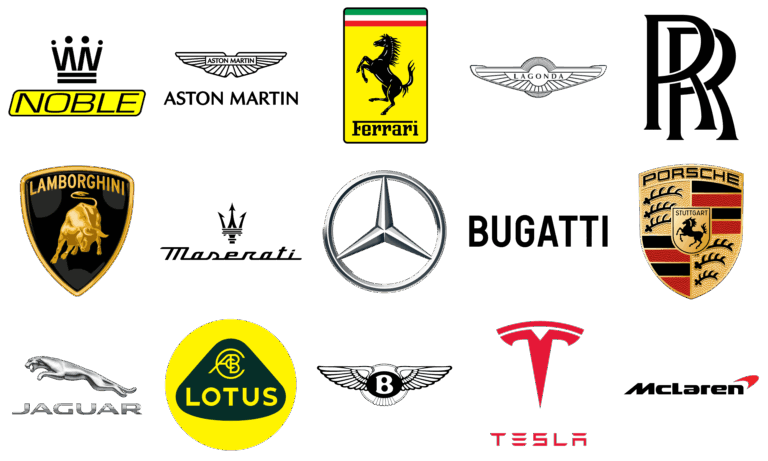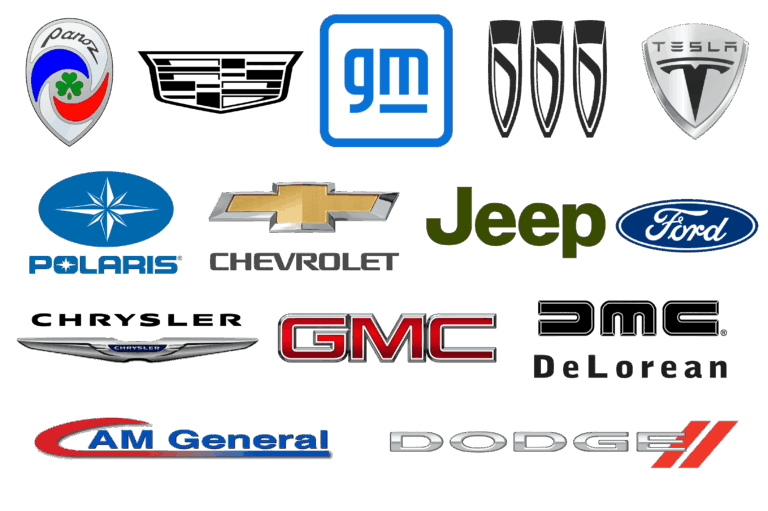Best Car Subwoofer Brands: Elevate Your In-Car Audio Experience
Best Car Subwoofer Brands: Elevate Your In-Car Audio Experience cars.truckstrend.com
The rumble of a deep bass line, the chest-thumping impact of a kick drum, or the subtle resonance of an orchestral piece – these are the nuances that transform a simple car ride into an immersive auditory journey. While stock car audio systems often deliver adequate sound, they almost universally fall short when it comes to reproducing the low-frequency sounds that give music its body and impact. This is where a car subwoofer steps in, serving as the dedicated speaker component designed to handle the lowest frequencies, adding depth, power, and clarity that regular speakers simply cannot achieve.
Investing in a quality car subwoofer isn’t just about making your music louder; it’s about making it fuller, richer, and more detailed. It allows your main speakers to focus on the mid and high frequencies, resulting in a cleaner, more balanced soundstage. But with a plethora of brands and models flooding the market, choosing the "best" car subwoofer can be a daunting task. This comprehensive guide will navigate you through the essential considerations, highlight the top brands, and equip you with the knowledge to make an informed decision for your ultimate in-car audio upgrade.
Best Car Subwoofer Brands: Elevate Your In-Car Audio Experience
What Makes a Great Car Subwoofer? Key Considerations
Before diving into specific brands, understanding the technical aspects that define a subwoofer’s performance is crucial. These factors dictate sound quality, power handling, and compatibility with your existing system.
- Power Handling (RMS vs. Peak): This is perhaps the most critical specification.
- RMS (Root Mean Square) Power: Represents the continuous power a subwoofer can handle reliably over an extended period. This is the more important number to consider.
- Peak Power: The maximum power a subwoofer can handle for a very brief instant. While impressive, it’s less relevant for sustained performance. Always match your subwoofer’s RMS rating with your amplifier’s RMS output for optimal performance and longevity.

- Sensitivity (dB): Measures how efficiently a subwoofer converts power into sound. A higher sensitivity rating (e.g., 90dB vs. 85dB) means the subwoofer will produce more sound with less power, making it a good choice for lower-powered systems.
- Frequency Response (Hz): Indicates the range of frequencies the subwoofer can reproduce. A wider range, especially extending lower (e.g., 20Hz – 200Hz), suggests deeper bass capabilities. Human hearing typically goes down to around 20Hz.
- Impedance (Ohms): Measured in ohms (Ω), common impedances are 2-ohm, 4-ohm, and 8-ohm. This must be matched with your amplifier’s stable impedance output. Mismatched impedance can lead to amplifier overheating or poor performance.
- Voice Coils (Single vs. Dual):
- Single Voice Coil (SVC): Simpler to wire, typically found in less powerful subs.
- Dual Voice Coil (DVC): Offers more wiring flexibility, allowing you to wire for different impedances (e.g., 1-ohm, 2-ohm, 4-ohm) to optimize power delivery from your amplifier.
- Enclosure Type: The box the subwoofer is mounted in significantly impacts its sound.
- Sealed Enclosure: Provides tight, accurate, and musical bass, but is less efficient and requires more power. Smaller in size.
- Ported (Vented) Enclosure: More efficient, produces louder and deeper bass for its size, but can be less accurate and larger.
- Bandpass Enclosure: Highly efficient and loud within a narrow frequency range, but can sound "boomy" and is the largest and most complex.
- Size: Common sizes include 8-inch, 10-inch, 12-inch, and 15-inch. Larger cones generally move more air, producing louder and deeper bass, but require more space.
- Cone and Surround Material: Affects durability, weight, and sound characteristics. Common materials include treated paper, polypropylene, woven glass fiber, or carbon fiber for cones, and rubber or foam for surrounds.
Top Car Subwoofer Brands to Consider
The market is rich with manufacturers, each with its unique philosophy and strengths. Here are some of the most respected and popular car subwoofer brands, known for their quality, performance, and innovation.
1. JL Audio
- Reputation: Widely considered the gold standard for car audio, particularly subwoofers. JL Audio is synonymous with premium sound quality, precision engineering, and exceptional performance.
- Known For: Producing incredibly accurate, musical, and deep bass. Their patented technologies like W-Cone and Elevated Frame Cooling (EFC) optimize performance and reliability.
- Key Product Lines: W0v3 (entry-level, great value), W3v3 (mid-range, excellent balance), W6v3 (high-performance, outstanding SQ), W7AE (flagship, ultimate in SQ and SPL).
- Target Audience: Audiophiles and enthusiasts who prioritize sound quality, accuracy, and don’t mind investing in a top-tier product.
2. Rockford Fosgate
- Reputation: A powerhouse in car audio, Rockford Fosgate is famous for its "Punch" series, delivering raw power and high SPL (Sound Pressure Level).
- Known For: Loud, impactful bass with a focus on durability and aggressive performance. They offer a wide range of subwoofers suitable for various applications, from daily drivers to competition vehicles.
- Key Product Lines: Punch P1/P2/P3 (great all-rounders), T-Series (Power series, high-end SPL), R-Series (Prime series, entry-level value).
- Target Audience: Bass-heads and those looking for powerful, hard-hitting bass that can be felt as much as heard, often at a competitive price point.
3. Kicker
- Reputation: A highly popular and versatile brand, Kicker strikes an excellent balance between sound quality, SPL, and value. They are known for their innovative designs and robust construction.
- Known For: Their iconic square subwoofers (L7 series) which are designed to move more air than traditional round subs of the same size, resulting in louder bass. They offer solutions for every budget and performance need.
- Key Product Lines: Comp (entry-level), CompRT (shallow mount), CompR (enhanced performance), Solo-Baric L7 (square subs, high SPL and sound quality), Q-Class (premium audiophile).
- Target Audience: Users seeking a strong, versatile bass performance that can get loud without sacrificing too much sound quality, offering great bang for the buck.
4. Alpine
- Reputation: A long-standing leader in car audio, Alpine is renowned for its comprehensive approach to in-car entertainment, with subwoofers that are both musical and powerful.
- Known For: Balanced performance, offering both good sound quality and impressive output. Their Type-R series has been a benchmark for performance and reliability for years.
- Key Product Lines: S-Series (value-packed), R-Series (Type-R, popular for balance), X-Series (premium, high-resolution audio), Type-S/Type-R/Type-X (older series names, still popular).
- Target Audience: Those who appreciate a well-rounded sound profile, with bass that is both impactful and accurate, suitable for a wide range of music genres.
5. Pioneer
- Reputation: A household name in electronics, Pioneer offers a vast array of car audio products, including subwoofers known for their reliability and accessibility.
- Known For: Providing solid performance and good value across their range. They offer both traditional and shallow-mount subwoofers, catering to various space constraints.
- Key Product Lines: TS-W series (wide range of sizes and power levels), Champion series (popular for balanced performance and value), shallow-mount options.
- Target Audience: Budget-conscious buyers or those looking for reliable, good-performing subwoofers without breaking the bank. Excellent for upgrading factory systems.
6. JBL
- Reputation: Another well-established brand with a strong presence in both home and car audio. JBL subwoofers are known for their clear, punchy bass and robust build quality.
- Known For: Offering a good balance of performance and affordability. Their Club and Stadium series are popular for their solid output and ease of integration.
- Key Product Lines: Club Series (affordable, good performance), Stage Series (entry-level), Stadium Series (higher performance, more power handling).
- Target Audience: General consumers looking for a noticeable upgrade in bass performance from a reputable brand at a reasonable price.
7. Sundown Audio
- Reputation: A cult favorite among serious bass-heads and SPL competitors. Sundown Audio specializes in building extremely robust and high-output subwoofers.
- Known For: Unmatched durability and the ability to handle immense power, producing incredibly loud and deep bass. Their designs are often heavy-duty and built for extreme abuse.
- Key Product Lines: E-Series (entry-level but still powerful), SA Series (popular for daily drivers and SPL), Zv5/Zv4 (competition-grade, extreme SPL).
- Target Audience: Enthusiasts who want maximum SPL, are willing to invest in powerful amplification, and prioritize raw bass output above all else. Not for the faint of heart or those seeking subtle bass.
Choosing the Right Subwoofer for Your Car
Selecting the perfect subwoofer involves more than just picking a brand; it requires a holistic approach to your audio system and vehicle.
- Define Your Goals:
- Sound Quality (SQ): Do you want accurate, tight, and musical bass that blends seamlessly with your music? Prioritize sealed enclosures and brands like JL Audio, Alpine, or Focal.
- Sound Pressure Level (SPL): Do you want to feel the bass and make your car vibrate? Focus on ported enclosures, higher RMS power, and brands like Rockford Fosgate, Kicker (L7), or Sundown Audio.
- Balanced: A mix of both? Many brands like Alpine or Kicker offer models that strike a good balance.
- Assess Your Space:
- Measure the available space in your trunk, under seats, or behind seats. This will dictate the maximum size of the subwoofer and enclosure you can accommodate. Shallow-mount or compact powered subwoofers are excellent solutions for limited space.
- Consider Your Budget:
- Subwoofers range from under $100 to over $1000. Remember that you’ll also need an amplifier, wiring kit, and potentially a custom enclosure. Set a realistic budget for the entire bass system.
- Amplifier Matching:
- This is critical! Your amplifier’s RMS output should ideally match your subwoofer’s RMS power handling. Also, ensure the amplifier can operate stably at the subwoofer’s impedance. An underpowered amp can cause distortion and damage to the subwoofer, while an overpowered amp can blow it.
- Enclosure Selection:
- Decide between sealed (tight, accurate bass, smaller size) or ported (louder, deeper bass, larger size). If you’re buying a separate subwoofer driver, you’ll need to purchase or build a suitable enclosure. Many brands also offer "loaded enclosures" (subwoofer pre-mounted in a box) or "powered subwoofers" (subwoofer and amp in one unit).
- Installation:
- While DIY is possible for the mechanically inclined, professional installation is recommended, especially for complex systems. They can ensure proper wiring, tuning, and integration with your vehicle’s electrical system, preventing potential damage and optimizing performance.
Tips for Optimizing Your Subwoofer’s Performance
Even the best subwoofer can sound mediocre if not properly set up.
- Proper Gain Setting: The gain knob on your amplifier is not a volume control. It should be set to match the output voltage of your head unit. Using a digital multimeter or an oscilloscope is the most accurate way to prevent clipping (distortion).
- Crossover Frequency: Set the low-pass filter (LPF) on your amplifier or head unit to filter out frequencies above what the subwoofer should play (e.g., 80-100Hz). Simultaneously, set a high-pass filter (HPF) on your main speakers to remove low frequencies they can’t handle. This prevents muddy sound and protects your speakers.
- Bass Boost: Use sparingly, if at all. Excessive bass boost can introduce distortion and lead to premature component failure.
- Phase Adjustment: Some amplifiers or head units have a phase switch (0° or 180°). Experiment with this setting to ensure the subwoofer’s output is in phase with your main speakers for coherent bass response.
- Sound Deadening: Applying sound deadening material to your car’s trunk, doors, and floor can significantly improve bass quality by reducing rattles and vibrations, making the bass sound tighter and more impactful.
- Break-in Period: Most subwoofers require a break-in period (typically 10-20 hours of moderate use) before they reach their optimal performance. Avoid pushing them too hard during this time.
Potential Challenges and Solutions
- Challenge: Overheating Subwoofer/Amplifier:
- Solution: Ensure proper impedance matching between the subwoofer and amplifier. Verify the amplifier has adequate ventilation. If using a custom enclosure, ensure it’s built to spec. An underpowered amplifier trying to drive a powerful sub can also lead to overheating due to clipping.
- Challenge: Distortion/Muddy Bass:
- Solution: Re-check gain settings (reduce if too high). Adjust crossover frequencies. Ensure the enclosure is sealed properly (if applicable) and is of the correct volume. Check for loose wiring or speaker cone damage.
- Challenge: Lack of Bass/Weak Output:
- Solution: Verify all wiring connections (power, ground, remote, speaker wires). Check amplifier settings (gain, LPF, bass boost). Ensure the subwoofer’s impedance matches the amplifier’s stable output. The enclosure might be too small or incorrect for the subwoofer. Check the phase setting.
- Challenge: Rattles and Vibrations:
- Solution: Apply sound deadening material to the trunk, license plate, and other vibrating panels. Secure all loose items in the trunk. Ensure the subwoofer and enclosure are firmly mounted.
- Challenge: Space Constraints:
- Solution: Consider shallow-mount subwoofers, compact powered subwoofers designed to fit under seats, or smaller 8-inch or 10-inch subwoofers in compact sealed enclosures.
Price Table: Best Car Subwoofer Brands (Estimated Ranges)
| Brand | Typical Price Range (Subwoofer Driver Only) | Key Strengths | Target User |
|---|---|---|---|
| JL Audio | $$$$ ($200 – $1000+) | Premium Sound Quality, Accuracy, High-End Build | Audiophiles, SQ Enthusiasts |
| Rockford F. | $$$ ($100 – $600+) | High SPL, Punchy Bass, Durability | Bass-Heads, SPL Competitors, Power Seekers |
| Kicker | $$ – $$$ ($80 – $500+) | Versatile, Loud Bass (L7), Good Value | All-Rounders, Those seeking Loud & Clear Bass |
| Alpine | $$ – $$$ ($90 – $450+) | Balanced Performance, SQ & SPL, Reliability | Balanced Listeners, General Upgrades |
| Pioneer | $ – $$ ($60 – $300+) | Value, Reliability, Wide Range of Options | Budget-Conscious, Entry-Level Upgrades |
| JBL | $ – $$ ($70 – $350+) | Clear & Punchy Bass, Accessible, Good Value | General Consumers, Noticeable Upgrade |
| Sundown Audio | $$$ – $$$$ ($150 – $800+) | Extreme SPL, Durability, High Power Handling | Serious Bass-Heads, SPL Competitors |
Note: Prices are estimates for individual subwoofer drivers and can vary significantly based on model, size, retailer, and sales. They do not include enclosures, amplifiers, or installation costs.
Frequently Asked Questions (FAQ)
Q1: How many subwoofers do I need?
A1: For most car audio systems, a single, properly matched and installed subwoofer is sufficient to provide excellent bass. Multiple subwoofers are typically used for extreme SPL (loudness) or for very large vehicles.
Q2: What’s the difference between active and passive subwoofers?
A2: A passive subwoofer is just the speaker driver itself and requires an external amplifier to power it. An active (or powered) subwoofer has a built-in amplifier, simplifying installation and often being more compact.
Q3: Do I need an amplifier for my subwoofer?
A3: Yes, for passive subwoofers, a dedicated external amplifier is essential. Factory head units or even aftermarket head units typically don’t provide enough power to properly drive a subwoofer. Powered subwoofers, by definition, include their own amplifier.
Q4: What’s the difference between RMS and Peak power?
A4: RMS (Root Mean Square) power is the continuous power a subwoofer can handle safely over time. Peak power is the maximum power it can withstand for very short bursts. Always use the RMS rating when matching your subwoofer to an amplifier.
Q5: Sealed vs. Ported enclosure: Which is better?
A5: It depends on your preference.
- Sealed enclosures produce tighter, more accurate, and musical bass, making them ideal for sound quality (SQ) enthusiasts. They are also generally smaller.
- Ported enclosures are more efficient, producing louder and deeper bass for their size, making them popular for SPL (loudness). However, they can be less accurate and require more space.
Q6: Is professional installation necessary?
A6: While DIY is possible, professional installation is highly recommended for optimal performance and safety. Installers have the tools, expertise, and experience to correctly wire, tune, and integrate the subwoofer into your vehicle’s electrical system, preventing potential damage and ensuring the best possible sound.
Conclusion
Choosing the best car subwoofer brand is a pivotal step in transforming your in-car audio experience from mundane to magnificent. By understanding the key technical specifications, recognizing the strengths of reputable brands like JL Audio, Rockford Fosgate, Kicker, Alpine, Pioneer, JBL, and Sundown Audio, and making informed decisions about integration and installation, you can unlock a new dimension of sound in your vehicle.
Whether you’re chasing the subtle nuances of an audiophile-grade setup or the earth-shaking thump of an SPL monster, there’s a perfect subwoofer out there for you. Invest wisely, tune meticulously, and prepare to feel the music like never before – turning every drive into a private concert.





